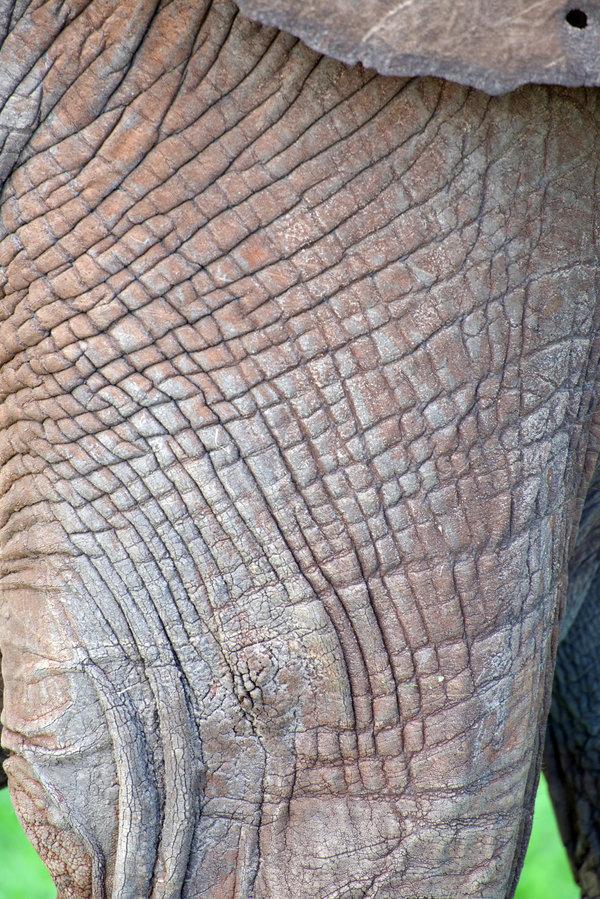The African elephant is known for its thick, wrinkly skin. But look closer and you’ll see an intricate network of tiny crevices that makes the mighty mammal’s hide resemble cracked mud or damaged asphalt.
The purpose of those cracks is no mystery. An elephant doesn’t have sweat or sebum glands, so it covers its skin in water or mud to keep cool. The micrometer-wide cracks in its skin retain 10 times more moisture than a flat surface, helping the animal regulate its body temperature. They also help mud adhere to the skin, which protects against parasites and rays from the sun.
Now, a team of researchers believe they have discovered that these cracks form as a result of the stress of skin bending, not shrinking. Their explanation, published Tuesday in Nature Communications, might even hold clues to treating a common human genetic skin disorder.
[Like the Science Times page on Facebook. | Sign up for the Science Times newsletter.]
Michel Milinkovitch, an evolutionary biologist at the University of Geneva in Switzerland, knows a bit about crackly animal skin. In 2013, he was part of a team that discovered that the scales on a crocodile’s face and jaw are actually skin that has folded and healed. When he set out to investigate the cracks in elephant skin, he expected to see a similar process at work.
That hunch received a boost when Dr. Milinkovitch’s team examined elephant skin samples under a microscope. They found that just beneath the thick top layer was a lower layer of papillae, the same kind of small protuberances found on the human tongue. These projections form a vast canvas of spiky peaks and valleys. That seemed to support their assumption about how the cracks were formed.
“We thought, ‘Oh, it’s a simple story,’” he said. “‘If we shrink something that is attached to a geometry like this, the cracks will appear in the valleys that are underneath.”
But when they ran computer simulations of growing elephant skin, they found that the skin didn’t crack as they anticipated. Shrinking alone would not account for an elephant’s skin patterns.

Dr. Milinkovitch studied skin samples and used computer modeling to find that as an elephant ages, the skin thickens until it cracks from the stress of bending.CreditMichel Milinkovitch
Instead, the simulations suggested the skin was breaking because of the stress of bending. Evidently, the skin was thickening as the elephants aged, growing to the point that it eventually collapsed under its own weight. But why was still unclear.
Further study of the skin tissue revealed that dead elephant skin cells resemble those of humans suffering from ichthyosis vulgaris, a disease found in one out of every 250 people that prevents the shedding of skin. In humans, the condition, for which there is no cure, causes thick, dry scales on the surface of the skin that are usually treated with moisturizers.
But in African elephants, holding onto all that dead skin appears to be beneficial: The lack of shedding causes the skin to build up as the elephant ages, eventually bending and breaking over the layer of papillae, which provides the animal the means to stay cool.
“If the skin was shedding, it would never get thick enough to generate the stress inside the little valleys of this lattice of elevations, and you would not have the cracks appearing,” said Dr. Milinkovitch. “In humans, this is not a helpful problem.”
More research is needed to determine whether the lack of skin shedding in elephants shares a genetic basis with ichthyosis vulgaris in humans. But the confluence of the conditions could suggest a path forward for treating the ailment.

